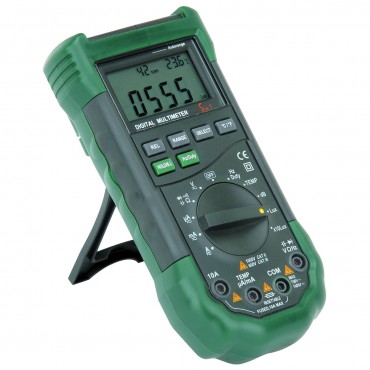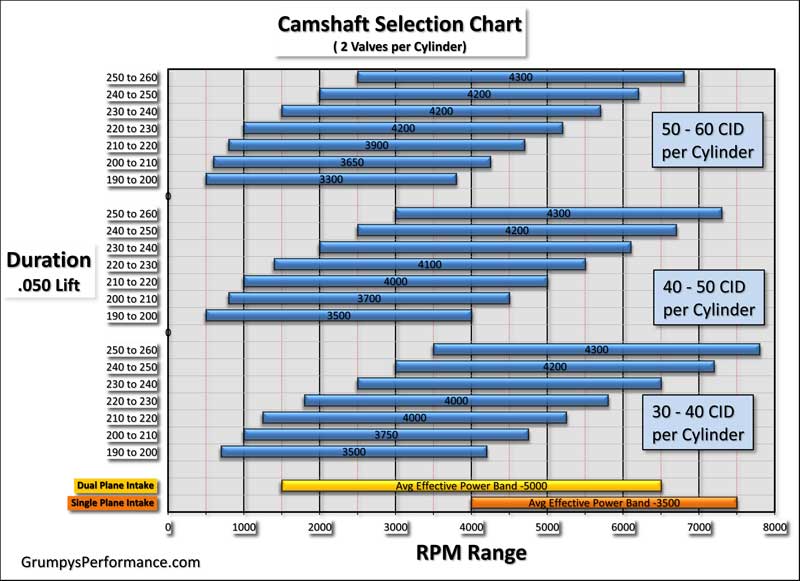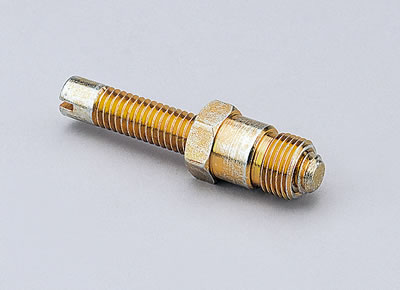Id start by checking for vacuum leaks and verifying the timing curve
STEP ONE IS ALWAYS GET A FACTORY SHOP MANUAL, AND DO YOURSELF A BIG FAVOR AND READ THE LINKS BELOW
Verify fuel pressure,. by using a fuel pressure gauge on the shrader valve on the fuel rail, or carb feed. with a pressure gauge,
Verify injector pulse by using a noid light, & spark at the plugs by using a spark tester.
verify timing with a timing light
pull the trouble codes and check all fuses, and for darn sure adjust the valves at idle and check carefully for vacuum leaks
it helps a great deal to know what your working with ,ID suggest starting, by verifying TDC on the engine and the marks on the damper and timing tab reflect reality after carefully checking that, and having the correct timing tape on your damper then,start with 8 degrees btdc and verifying the full ignition advance of 36 degrees total is all in at 3200rpm , and progresses smoothly as the rpms increase, as a base line, once youve got that, as a standard you can tune and run the car and eventually try tweaks to the basic ignition curve if needed, once you have an ignition base line, move on to the carbs tuning.
having the engine temperature remain in a fairly consistent temperature range while operating helps you tune the car and make repeatable power, and insuring better durability.
verify your alternator and battery voltage remains fairly consistent, and having an infrared thermometer to read cylinder exhaust temps, and a multi meter and vacuum gauge, is always a good tool to help diagnose problems.
btw
before you get crazy chasing some problem your be sure it is not an intermittent fuel delivery issue
(1) Do a compression test!
(2) verify your ignition advance curve, and verify the ignition systems working correctly , the spark plugs are new, properly gaped and the ignition wires in excellent condition visually and with an OHMS meter.
(3) adjust your valves, correctly
(4) carefully verify theres no vacuum leaks, in lines or gaskets
(5)Check the fuel delivery system, WITH A GAUGE, while the engines under real operational inertial loads to verify you have a consistent 5-6 psi at the carburetor inlet port
(6) change out the fuel and air filters, especially if over 3-4 months old
(7) actually check your exhaust back-pressure levels
(8) verify your return style fuel pressure regulator and fuel lines function as intended
(9)verify your using FRESH FUEL WITHOUT MOISTURE OR PARTICULAR CONTAMINANTS
(10) actually look for and read installation instructions and rated flow and pressure limitations on fuel pumps and filters
(11) If ALL of the above are normal, only then start looking at the carburetor, and tuning issues
I wish you were local, that sounds like a quick and interesting issue to track
you need to drop back and check basics, it almost always , comes down to mis-matched or improperly functioning components or something worm, defective or out of adjustment, the logical isolate and test procedure, and
a few tools like a vacuum gauge,
compression tester,
dial indicator
and stand,
timing light,
and multi meter,
an IR temp gun to detect cylinder too cylinder temp differences,
and a shop manual for your year car,
and/or a few years in the hobby,
doing similar repairs,
will quickly lead you to the source of the problem
basics
battery voltage (generally 12.7 volts with the car not running and 13.9-14.7 with it at idle)
good grounds
(Less than 3 ohms between battery neg pole and frame)
fuel pressure (with a carb, 4.5-6 psi)
fuel volume and delivery (at least a quart ever 30 seconds) at the carb inlet port
verify coil polarity
compression, consistent in all cylinder with-in 10-12 psi, (generally in the 150 psi-190 psi range)
spark delivery at the plugs and less than 100 ohms per foot preferred
firing order,(yeah I know your sure..CHECK IT AGAIN.)
related link
viewtopic.php?f=57&t=4974&p=29925&hilit=INFRARED#p29925
it is always helps to post your location,when posting questions, at least the city & state your located in because theres a good chance an experienced hobbyist or mechanic on this site may be reading this, located local to you, who is willing to help either for free or at low cost! or at least post advices and places to get parts locally
if youve already built the engine and can,t quite figure out why its not running up to expectations, ..a logical step bye step approach is best, youll need to verify cylinder compression, ignition, spark strength and ignition,timing ignition,advance,and fuel and air delivery, ID also suggest a compression test and a general checking over,each potential engine and drive line sub-system carefully, with a timing light,vacuum gauge, fuel pressure gauge, VOM meter , ETC. and adjusting valves, checking for vacuum leaks, check fuel pressure and post clear pictures of spark plugs as they give a ton of info if you know how to read them, etc.
Id also be pulling and changing the oil filter and inspecting the old one for metallic debris indicating a worn cam lobe
basically an in depth tune-up and system verification is whats needed

watch this


http://www.harborfreight.com/5-in-1-dig ... 98674.html

having a fluke multi meter and an assortment of test leads helps
FLUKE is the brand of choice but they are expensive, shop around, Ive still got the original fluke multi meter I bought in HIGH SCHOOL and it STILL WORKS Ive purchase several imported multi meters from harbor freight , in the last 10 years alone and only one still works
http://www.fluke-direct.com/shop/itemDe ... urer=FLUKE
http://www.fluke-direct.com/shop/catego ... TERS&path=
viewtopic.php?f=70&t=1809
viewtopic.php?f=70&t=875
viewtopic.php?f=57&t=4701&p=12741#p12741
many carb tuning issues are really basic fuel supply issues, if you can,t maintain a consistent flow at a constant pressure to the carbs feed the car will more than likely have tuning issues



standard vacuum connections

manifold to power brake booster
manifold to distrib vacuum advance
pvc to carb or air cleaner assembly
viewtopic.php?f=55&t=211
viewtopic.php?f=55&t=635
viewtopic.php?f=55&t=264&p=1301#p1301
viewtopic.php?f=44&t=5575&p=16927#p16927
Id start by dropping or raising the fuel pressure to 5.5 lbs and verifying your getting a minimum of a 1/2 gallon a minute unrestricted flow,but in most cases the fuel pressure at the carb inlet port NEEDS to read 4.5-5 psi MAX and you NEED to set the float levels per the carb manufacturers instructions, having the pressure at 6.5 psi will in many cases cause the needle & seat valve to constantly leak excess fuel, into the carb while the engine runs
Id start at all four jets #70
If theres any doubt as to component condition like for example your power valve, Id install a NEW power valve and ID buy several, more of slightly higher and lower ratings if your carb uses them, so I could play/exchange/test, you generally start with one rated at 1/2 your idle vacuum reading IE if your pulling 17" at idle youll want a power valve rated at about 8.5" or 7.5# rated power valve, and having a selection of jets sure helps
http://www.summitracing.com/parts/HLY-36-181/

http://www.summitracing.com/parts/PHP-15001/

viewtopic.php?f=44&t=1788
viewtopic.php?f=55&t=1820&p=4717&hilit=edelbrock#p4717
http://www.holley.com/TechService/Instr ... ry=&page=4
viewtopic.php?f=50&t=383&p=1637&hilit=+infrared+tuning#p1637
viewtopic.php?f=44&t=579&p=743&hilit=+infrared+tuning#p743
start here, reading thru these links and info, there's no sense in guessing, so do the testing and research then adjust or tune as necessary, but knowing what your looking for helps a great deal.
viewtopic.php?f=44&t=745&p=1054#p1054
http://www.chevyhiperformance.com/tech/ ... index.html
http://www.themotorbookstore.com/holley ... etors.html
http://www.themotorbookstore.com/motuhocavo2.html
http://www.themotorbookstore.com/holley1.html
http://www.bob2000.com/carb.htm
http://www.mortec.com/carbtip1.htm
viewtopic.php?f=70&t=5428
http://store.summitracing.com/partdetai ... toview=sku
http://www.professionalequipment.com/ex ... ermometer/
http://www.centuryperformance.com/vacuum.asp
http://www.carcraft.com/techarticles/carb_tuning/
heres where
a infared non-contact thermometer helps diagnose mixture problems very quickly, but youll need one that reads into the 1400F range for the headers for quick diagnoses
http://www.professionalequipment.com/xq/ASP/ProductID.3461/id.22/subID.177/qx/default.htm
temperature range from -58 to 1832°F
I use this one :grin: (above) and youll need to learn how to read plugs (this may help)
http://www.chevytalk.org/threads/showfla...rue#Post1448415
heres A/F
http://www.rbracing-rsr.com/rsrgauge.htm
http://www.mummbrothers.com/SRF_Stuff/Secrets/Driveline/Air_Fuel.htm
http://www.airfuelmeter.com/english/
http://www.innovatemotorsports.com/products/lm1.php
http://thedynoshop.net/prod01.htm
viewtopic.php?f=50&t=1853&p=4848#p4848
http://www.visn2.com/UsingVacumeGauge.html
http://www.dawesdevices.com/airfuelmeter.html
http://fastrides.com/articles/DoItYourself_AirFuelRatio_Gauge.html
http://www.fuelairspark.com/Products/Information/AirFuelMeter.asp
http://www.3barracing.com/product_3.htm
http://www.thecarburetorshop.com/Troubleshooting.htm
viewtopic.php?f=56&t=572&p=7457#p7457
a few places to look for plug/ignition info
http://auto.howstuffworks.com/ignition-system.htm
http://www.ngksparkplugs.com/techinfo/spark_plugs/techtips.asp?nav=31000&country=
http://www.gofastzone.com/techtips/sparkplugs/sparkplugs.htm
http://www.acdelco.com/html/pi_plugs_ident.htm
http://www.autolite.com/framer.cgi?page=http://www.autolite.com/products/racing.htm
http://members.uia.net/pkelley2/sparkplugreading.html
http://www.atlanticjetsports.com/_techtalk/00000005.htm
http://www.strappe.com/plugs.html
http://www.babcox.com/editorial/cm/cm59910.htm
http://www.ngksparkplugs.com/techinfo/spark_plugs/partnumberkey.pdf
http://www.nightrider.com/biketech/spkplghnbook.htm
viewtopic.php?f=44&t=5615&p=17136#p17136
http://www.tsrsoftware.com/sparkplug.htm
http://www.gnttype.org/techarea/engine/plugs.html
http://www.dansmc.com/sparkplugs1.htm
http://www.ngksparkplugs.com/techinfo/spark_plugs/overviewp2.asp
http://www.pajjakid.com/ubipa/sparkplugs.htm
http://www.edelbrock.com/automotive/sparkplugs.html
http://www.bullittarchive.com/Maintenance/Sparkplugoverview/
http://www.powerarc.com/sparkplug.htm
http://www.carcraft.com/techarticles/64378/
http://www.wakularacing.com/TechnicalInfo.htm
http://www.geocities.com/MotorCity/Flats/3877/spark.html
http://www.centuryperformance.com/tunin ... g-148.html
http://www.secondchancegarage.com/public/186.cfm
http://www.rmlautomotive.com/ignition.html
http://www.bgsoflex.com/auto.html
http://ourworld.compuserve.com/homepages/JET_AV8R/Vision/Ignition/CDI.HTML
http://www.howstuffworks.com/ignition-system.htm
http://auto.howstuffworks.com/ignition-system1.htm
http://www.familycar.com/Classroom/ignition.htm
viewtopic.php?f=44&t=5615&p=17136#p17136
http://www.motocross.com/motoprof/moto/secontent/seign/ignprin/ignprin.htm
http://www.northwestautorepair.com/ignitionsystem.htm
http://www.boyleworks.com/ta400/psp/distcurve.html
http://www.chevytalk.com/tech/index.html
http://garage.grumpysperformance.co...stalling-the-intake-manifold-distributor.464/
heres other options
http://www.davessmallbodyheis.com/
http://www.msdignition.com/
http://www.proformparts.com/catalog/distributors_GM.html
http://www.atlanticspeed.com/store/MSD Chevrolet Distributors.asp
http://www.holley.com/HiOctn/ProdLine/Products/IS/ISD/ISD.html
http://www.performancedistributors.com/gmdui.htm
Spark plug /ignition info
http://www.edelbrock.com/automotive/sparkplugs.html
http://www.ngksparkplugs.com/apps/car_truck_suv/default.asp?nav=60000&country=US
http://www.strappe.com/plugs.html
http://www.applink.net/cct/tips/plugwires.html
http://www.acdelco.com/html/pi_plugs_ident.htm
http://www.atlanticjetsports.com/_techtalk/00000005.htm
http://www.ngkspark.com.au/spark_plug_cross_ref_chart_index3.htm
http://www.strappe.com/plugs.html
http://www.babcox.com/editorial/cm/cm59910.htm
http://www.ngksparkplugs.com/techinfo/spark_plugs/partnumberkey.pdf
http://www.eric-gorr.com/techarticles/sparkplugs.html
viewtopic.php?f=50&t=6174&p=20791#p20791
http://www.gnttype.org/techarea/engine/plugs.html
http://www.tsrsoftware.com/sparkplug.htm
http://www.racinghelp.com/read_spark_plugs.html
http://www.ngksparkplugs.com/techinfo/spark_plugs/overviewp2.asp
http://www.gofastzone.com/techtips/Spark...20Reference.htm
http://www.geocities.com/zgarage2001/adv...01/advance.html
http://www.hotrod.com/techarticles/43300...harticles/43300
http://www.centuryperformance.com/vacuum....com/vacuum.asp
http://www.custompistols.com/cars/articl...tion_timing.htm
http://chevyhiperformance.com/howto/4567...com/howto/45673
http://www.lmengines.com/Ignition_Timing...tion_Timing.htm
http://www.bgsoflex.com/auto.html
OPTISPARK info
http://www.gmhightechperformance.com/tech/0310htp_optispark/
http://www.charm.net/~mchaney/optisprk/optisprk.htm
http://www.fierolt1.com/lt1_95_up_OptiReplace.htm
http://www.noid.org/~muttvette/opti.html
http://www.gulicks.com/vette/projects/opti/index.html
http://www.houston-f-body.org/tech/optispark/
http://www.dynotech-eng.com/dynaspark.htm
http://www.corvetteclinicinc.com
http://www.corvettefever.com/howto/16758
viewtopic.php?f=55&t=58
viewtopic.php?f=55&t=109
viewtopic.php?f=55&t=211
you may find these links ans sub links rather useful
keep in mind that within reasonable limits carb size is not as critical as the ability of the cars operator to get the combo correctly set up and tuned, you can slap a 650-750 cfm carb on darn near any chevy v8 and a skilled tuner can get it running rather well
STEP ONE IS ALWAYS GET A FACTORY SHOP MANUAL, AND DO YOURSELF A BIG FAVOR AND READ THE LINKS BELOW
Verify fuel pressure,. by using a fuel pressure gauge on the shrader valve on the fuel rail, or carb feed. with a pressure gauge,
Verify injector pulse by using a noid light, & spark at the plugs by using a spark tester.
verify timing with a timing light
pull the trouble codes and check all fuses, and for darn sure adjust the valves at idle and check carefully for vacuum leaks
it helps a great deal to know what your working with ,ID suggest starting, by verifying TDC on the engine and the marks on the damper and timing tab reflect reality after carefully checking that, and having the correct timing tape on your damper then,start with 8 degrees btdc and verifying the full ignition advance of 36 degrees total is all in at 3200rpm , and progresses smoothly as the rpms increase, as a base line, once youve got that, as a standard you can tune and run the car and eventually try tweaks to the basic ignition curve if needed, once you have an ignition base line, move on to the carbs tuning.
having the engine temperature remain in a fairly consistent temperature range while operating helps you tune the car and make repeatable power, and insuring better durability.
verify your alternator and battery voltage remains fairly consistent, and having an infrared thermometer to read cylinder exhaust temps, and a multi meter and vacuum gauge, is always a good tool to help diagnose problems.
btw
before you get crazy chasing some problem your be sure it is not an intermittent fuel delivery issue
(1) Do a compression test!
(2) verify your ignition advance curve, and verify the ignition systems working correctly , the spark plugs are new, properly gaped and the ignition wires in excellent condition visually and with an OHMS meter.
(3) adjust your valves, correctly
(4) carefully verify theres no vacuum leaks, in lines or gaskets
(5)Check the fuel delivery system, WITH A GAUGE, while the engines under real operational inertial loads to verify you have a consistent 5-6 psi at the carburetor inlet port
(6) change out the fuel and air filters, especially if over 3-4 months old
(7) actually check your exhaust back-pressure levels
(8) verify your return style fuel pressure regulator and fuel lines function as intended
(9)verify your using FRESH FUEL WITHOUT MOISTURE OR PARTICULAR CONTAMINANTS
(10) actually look for and read installation instructions and rated flow and pressure limitations on fuel pumps and filters
(11) If ALL of the above are normal, only then start looking at the carburetor, and tuning issues
I wish you were local, that sounds like a quick and interesting issue to track
you need to drop back and check basics, it almost always , comes down to mis-matched or improperly functioning components or something worm, defective or out of adjustment, the logical isolate and test procedure, and
a few tools like a vacuum gauge,
compression tester,
dial indicator
and stand,
timing light,
and multi meter,
an IR temp gun to detect cylinder too cylinder temp differences,
and a shop manual for your year car,
and/or a few years in the hobby,
doing similar repairs,
will quickly lead you to the source of the problem
basics
battery voltage (generally 12.7 volts with the car not running and 13.9-14.7 with it at idle)
good grounds
(Less than 3 ohms between battery neg pole and frame)
fuel pressure (with a carb, 4.5-6 psi)
fuel volume and delivery (at least a quart ever 30 seconds) at the carb inlet port
verify coil polarity
compression, consistent in all cylinder with-in 10-12 psi, (generally in the 150 psi-190 psi range)
spark delivery at the plugs and less than 100 ohms per foot preferred
firing order,(yeah I know your sure..CHECK IT AGAIN.)
related link
viewtopic.php?f=57&t=4974&p=29925&hilit=INFRARED#p29925
it is always helps to post your location,when posting questions, at least the city & state your located in because theres a good chance an experienced hobbyist or mechanic on this site may be reading this, located local to you, who is willing to help either for free or at low cost! or at least post advices and places to get parts locally
if youve already built the engine and can,t quite figure out why its not running up to expectations, ..a logical step bye step approach is best, youll need to verify cylinder compression, ignition, spark strength and ignition,timing ignition,advance,and fuel and air delivery, ID also suggest a compression test and a general checking over,each potential engine and drive line sub-system carefully, with a timing light,vacuum gauge, fuel pressure gauge, VOM meter , ETC. and adjusting valves, checking for vacuum leaks, check fuel pressure and post clear pictures of spark plugs as they give a ton of info if you know how to read them, etc.
Id also be pulling and changing the oil filter and inspecting the old one for metallic debris indicating a worn cam lobe
basically an in depth tune-up and system verification is whats needed

watch this


http://www.harborfreight.com/5-in-1-dig ... 98674.html

having a fluke multi meter and an assortment of test leads helps
FLUKE is the brand of choice but they are expensive, shop around, Ive still got the original fluke multi meter I bought in HIGH SCHOOL and it STILL WORKS Ive purchase several imported multi meters from harbor freight , in the last 10 years alone and only one still works
http://www.fluke-direct.com/shop/itemDe ... urer=FLUKE
http://www.fluke-direct.com/shop/catego ... TERS&path=
viewtopic.php?f=70&t=1809
viewtopic.php?f=70&t=875
viewtopic.php?f=57&t=4701&p=12741#p12741
many carb tuning issues are really basic fuel supply issues, if you can,t maintain a consistent flow at a constant pressure to the carbs feed the car will more than likely have tuning issues



standard vacuum connections

manifold to power brake booster
manifold to distrib vacuum advance
pvc to carb or air cleaner assembly
viewtopic.php?f=55&t=211
viewtopic.php?f=55&t=635
viewtopic.php?f=55&t=264&p=1301#p1301
viewtopic.php?f=44&t=5575&p=16927#p16927
Id start by dropping or raising the fuel pressure to 5.5 lbs and verifying your getting a minimum of a 1/2 gallon a minute unrestricted flow,but in most cases the fuel pressure at the carb inlet port NEEDS to read 4.5-5 psi MAX and you NEED to set the float levels per the carb manufacturers instructions, having the pressure at 6.5 psi will in many cases cause the needle & seat valve to constantly leak excess fuel, into the carb while the engine runs
Id start at all four jets #70
If theres any doubt as to component condition like for example your power valve, Id install a NEW power valve and ID buy several, more of slightly higher and lower ratings if your carb uses them, so I could play/exchange/test, you generally start with one rated at 1/2 your idle vacuum reading IE if your pulling 17" at idle youll want a power valve rated at about 8.5" or 7.5# rated power valve, and having a selection of jets sure helps
http://www.summitracing.com/parts/HLY-36-181/

http://www.summitracing.com/parts/PHP-15001/

viewtopic.php?f=44&t=1788
viewtopic.php?f=55&t=1820&p=4717&hilit=edelbrock#p4717
http://www.holley.com/TechService/Instr ... ry=&page=4
viewtopic.php?f=50&t=383&p=1637&hilit=+infrared+tuning#p1637
viewtopic.php?f=44&t=579&p=743&hilit=+infrared+tuning#p743
start here, reading thru these links and info, there's no sense in guessing, so do the testing and research then adjust or tune as necessary, but knowing what your looking for helps a great deal.
viewtopic.php?f=44&t=745&p=1054#p1054
http://www.chevyhiperformance.com/tech/ ... index.html
http://www.themotorbookstore.com/holley ... etors.html
http://www.themotorbookstore.com/motuhocavo2.html
http://www.themotorbookstore.com/holley1.html
http://www.bob2000.com/carb.htm
http://www.mortec.com/carbtip1.htm
viewtopic.php?f=70&t=5428
http://store.summitracing.com/partdetai ... toview=sku
http://www.professionalequipment.com/ex ... ermometer/
http://www.centuryperformance.com/vacuum.asp
http://www.carcraft.com/techarticles/carb_tuning/
heres where
a infared non-contact thermometer helps diagnose mixture problems very quickly, but youll need one that reads into the 1400F range for the headers for quick diagnoses
http://www.professionalequipment.com/xq/ASP/ProductID.3461/id.22/subID.177/qx/default.htm
temperature range from -58 to 1832°F
I use this one :grin: (above) and youll need to learn how to read plugs (this may help)
http://www.chevytalk.org/threads/showfla...rue#Post1448415
heres A/F
http://www.rbracing-rsr.com/rsrgauge.htm
http://www.mummbrothers.com/SRF_Stuff/Secrets/Driveline/Air_Fuel.htm
http://www.airfuelmeter.com/english/
http://www.innovatemotorsports.com/products/lm1.php
http://thedynoshop.net/prod01.htm
viewtopic.php?f=50&t=1853&p=4848#p4848
http://www.visn2.com/UsingVacumeGauge.html
http://www.dawesdevices.com/airfuelmeter.html
http://fastrides.com/articles/DoItYourself_AirFuelRatio_Gauge.html
http://www.fuelairspark.com/Products/Information/AirFuelMeter.asp
http://www.3barracing.com/product_3.htm
http://www.thecarburetorshop.com/Troubleshooting.htm
viewtopic.php?f=56&t=572&p=7457#p7457
a few places to look for plug/ignition info
http://auto.howstuffworks.com/ignition-system.htm
http://www.ngksparkplugs.com/techinfo/spark_plugs/techtips.asp?nav=31000&country=
http://www.gofastzone.com/techtips/sparkplugs/sparkplugs.htm
http://www.acdelco.com/html/pi_plugs_ident.htm
http://www.autolite.com/framer.cgi?page=http://www.autolite.com/products/racing.htm
http://members.uia.net/pkelley2/sparkplugreading.html
http://www.atlanticjetsports.com/_techtalk/00000005.htm
http://www.strappe.com/plugs.html
http://www.babcox.com/editorial/cm/cm59910.htm
http://www.ngksparkplugs.com/techinfo/spark_plugs/partnumberkey.pdf
http://www.nightrider.com/biketech/spkplghnbook.htm
viewtopic.php?f=44&t=5615&p=17136#p17136
http://www.tsrsoftware.com/sparkplug.htm
http://www.gnttype.org/techarea/engine/plugs.html
http://www.dansmc.com/sparkplugs1.htm
http://www.ngksparkplugs.com/techinfo/spark_plugs/overviewp2.asp
http://www.pajjakid.com/ubipa/sparkplugs.htm
http://www.edelbrock.com/automotive/sparkplugs.html
http://www.bullittarchive.com/Maintenance/Sparkplugoverview/
http://www.powerarc.com/sparkplug.htm
http://www.carcraft.com/techarticles/64378/
http://www.wakularacing.com/TechnicalInfo.htm
http://www.geocities.com/MotorCity/Flats/3877/spark.html
http://www.centuryperformance.com/tunin ... g-148.html
http://www.secondchancegarage.com/public/186.cfm
http://www.rmlautomotive.com/ignition.html
http://www.bgsoflex.com/auto.html
http://ourworld.compuserve.com/homepages/JET_AV8R/Vision/Ignition/CDI.HTML
http://www.howstuffworks.com/ignition-system.htm
http://auto.howstuffworks.com/ignition-system1.htm
http://www.familycar.com/Classroom/ignition.htm
viewtopic.php?f=44&t=5615&p=17136#p17136
http://www.motocross.com/motoprof/moto/secontent/seign/ignprin/ignprin.htm
http://www.northwestautorepair.com/ignitionsystem.htm
http://www.boyleworks.com/ta400/psp/distcurve.html
http://www.chevytalk.com/tech/index.html
http://garage.grumpysperformance.co...stalling-the-intake-manifold-distributor.464/
heres other options
http://www.davessmallbodyheis.com/
http://www.msdignition.com/
http://www.proformparts.com/catalog/distributors_GM.html
http://www.atlanticspeed.com/store/MSD Chevrolet Distributors.asp
http://www.holley.com/HiOctn/ProdLine/Products/IS/ISD/ISD.html
http://www.performancedistributors.com/gmdui.htm
Spark plug /ignition info
http://www.edelbrock.com/automotive/sparkplugs.html
http://www.ngksparkplugs.com/apps/car_truck_suv/default.asp?nav=60000&country=US
http://www.strappe.com/plugs.html
http://www.applink.net/cct/tips/plugwires.html
http://www.acdelco.com/html/pi_plugs_ident.htm
http://www.atlanticjetsports.com/_techtalk/00000005.htm
http://www.ngkspark.com.au/spark_plug_cross_ref_chart_index3.htm
http://www.strappe.com/plugs.html
http://www.babcox.com/editorial/cm/cm59910.htm
http://www.ngksparkplugs.com/techinfo/spark_plugs/partnumberkey.pdf
http://www.eric-gorr.com/techarticles/sparkplugs.html
viewtopic.php?f=50&t=6174&p=20791#p20791
http://www.gnttype.org/techarea/engine/plugs.html
http://www.tsrsoftware.com/sparkplug.htm
http://www.racinghelp.com/read_spark_plugs.html
http://www.ngksparkplugs.com/techinfo/spark_plugs/overviewp2.asp
http://www.gofastzone.com/techtips/Spark...20Reference.htm
http://www.geocities.com/zgarage2001/adv...01/advance.html
http://www.hotrod.com/techarticles/43300...harticles/43300
http://www.centuryperformance.com/vacuum....com/vacuum.asp
http://www.custompistols.com/cars/articl...tion_timing.htm
http://chevyhiperformance.com/howto/4567...com/howto/45673
http://www.lmengines.com/Ignition_Timing...tion_Timing.htm
http://www.bgsoflex.com/auto.html
OPTISPARK info
http://www.gmhightechperformance.com/tech/0310htp_optispark/
http://www.charm.net/~mchaney/optisprk/optisprk.htm
http://www.fierolt1.com/lt1_95_up_OptiReplace.htm
http://www.noid.org/~muttvette/opti.html
http://www.gulicks.com/vette/projects/opti/index.html
http://www.houston-f-body.org/tech/optispark/
http://www.dynotech-eng.com/dynaspark.htm
http://www.corvetteclinicinc.com
http://www.corvettefever.com/howto/16758
viewtopic.php?f=55&t=58
viewtopic.php?f=55&t=109
viewtopic.php?f=55&t=211
you may find these links ans sub links rather useful
keep in mind that within reasonable limits carb size is not as critical as the ability of the cars operator to get the combo correctly set up and tuned, you can slap a 650-750 cfm carb on darn near any chevy v8 and a skilled tuner can get it running rather well
Last edited by a moderator:


























